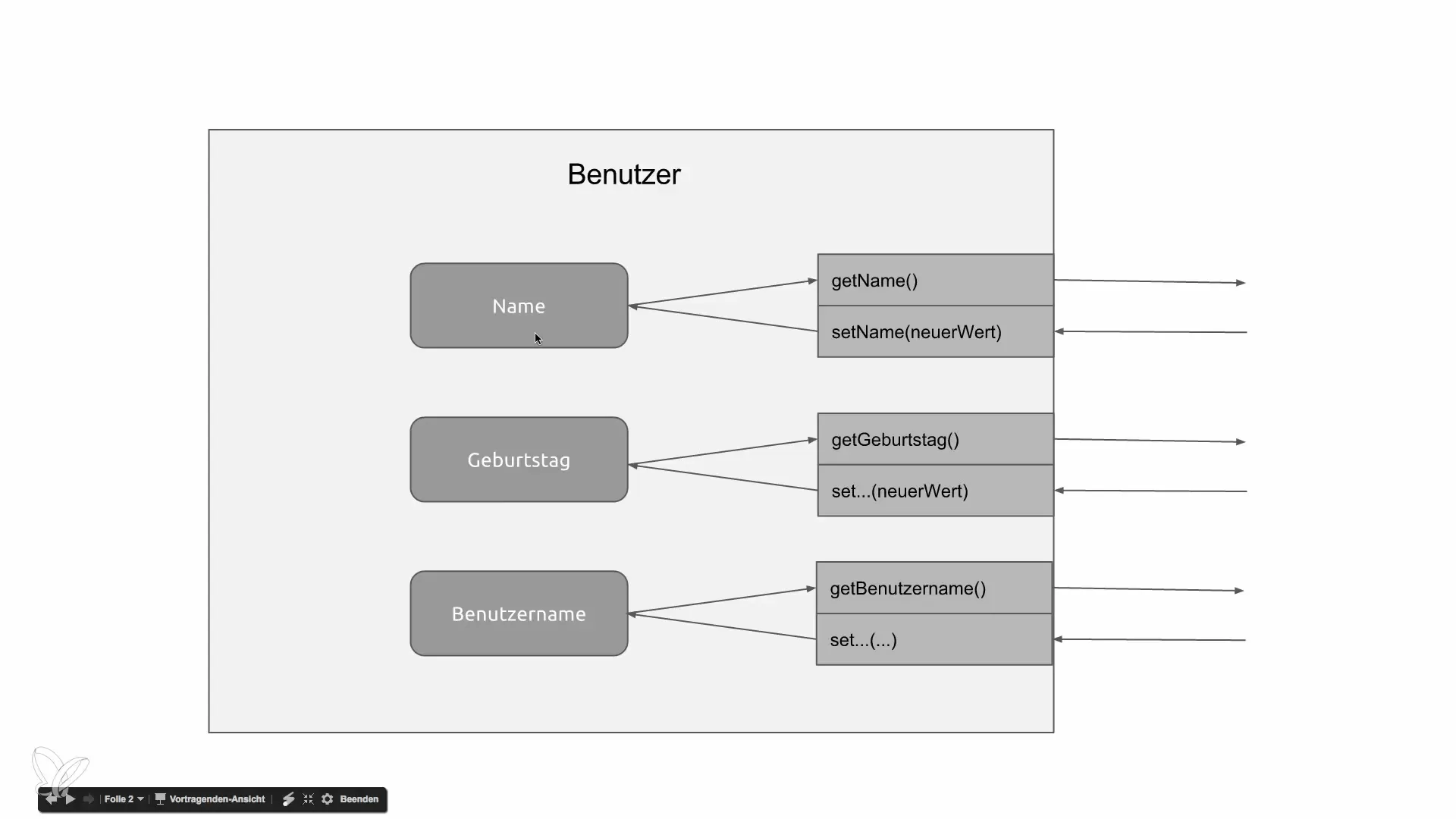Data encapsulation is an essential concept of object-oriented programming, especially in languages like PHP. It allows you to hide the internal representation of objects and control access to their properties. This technique can prevent unwanted access to important data while ensuring the integrity of the objects. In this tutorial, you will learn the basic principles of data encapsulation and how to implement them in your PHP applications.
Key Insights
- Data encapsulation protects the integrity of objects.
- Access to properties is done via getter and setter methods.
- Validation and formatting of data can be implemented through these methods.
Step-by-step guide to implementing data encapsulation in PHP
1. Define the class and its properties
Start by defining a class that will capture all the properties. In this example, we use a class called User, which contains three attributes like the name, birth date, and username.
By using the private modifier, access to these attributes from outside is restricted.
2. Create getter and setter methods
To allow access to the properties of the class, create getter and setter methods. These methods allow controlled access to the private attributes.

Here you have a method to get the name and another to set it.
3. Validation when setting values
It is not only important to set attributes but also to ensure that the assigned values are valid. For example, when setting the birth date, you could check whether the user is of legal age.
This code ensures that the birth date is valid and that the user is of the required age.
4. Interaction with the methods
By implementing the getter and setter methods, access to the attributes of the class is regulated. You can now access the attributes without directly accessing them, which enhances data encapsulation.
Here, the username is set first via the set method and then retrieved via the get method.
5. Reflection of encapsulation
The primary purpose of data encapsulation is to create a "virtual capsule" around the object that provides a controlled interface for accessing the attributes. This protects the data and ensures that all business logic and validations happen in the right place.
By implementing this principle, you can increase both the stability of your code and make the use of the objects clearer.
Summary – Data encapsulation in object-oriented web programming with PHP
In this tutorial, you learned the basics of data encapsulation in object-oriented web programming with PHP. You saw how important it is to combine private attributes with getter and setter methods to protect the integrity of your data. You also learned how to implement validations directly when assigning attributes.
Frequently Asked Questions
What are the benefits of data encapsulation?Data encapsulation protects the integrity of the data, allows controlled access, and improves code maintainability.
What are getter and setter methods?Getter methods retrieve the value of a property, while setter methods set the value and often contain validation logic.
Why should attributes be set to private?Private attributes prevent direct access from outside, which makes the class safer and its data more consistent.
Can getter and setter methods also contain more complex logic?Yes, you can include any logic in these methods, including validations and calculations.
How can I implement encapsulation in large projects?Use data encapsulation in all classes and keep access modifiers consistent to ensure a high level of security and structure.


